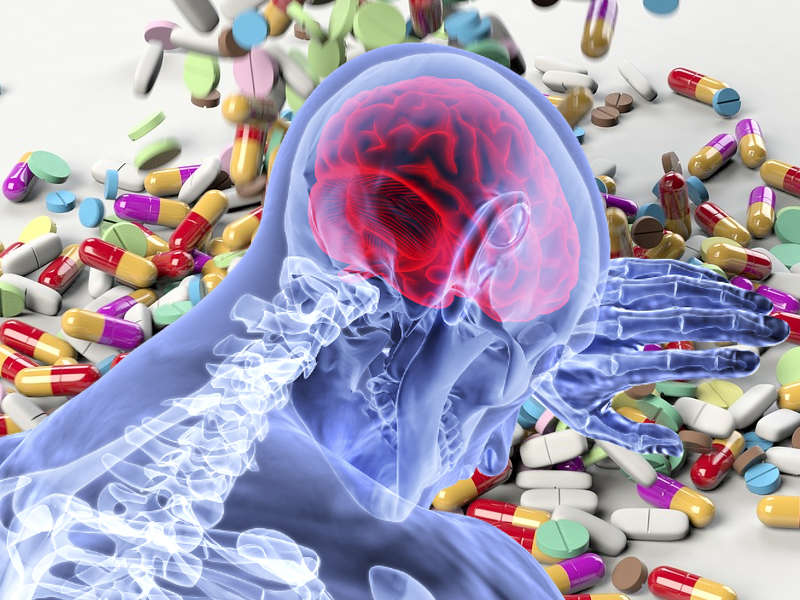
Chronic pain: definition, symptoms, diagnosis and treatment
Let’s talk about chronic pain. The International Association for the Study of Pain (IASP, 1979) defines pain as an unpleasant sensory and emotional experience associated with actual or potential tissue damage, or described in terms of
As can be seen from the definition of the IASP, pain is the product of two components, the perceptive component (or nociception) which allows the reception and transport to the CNS of potentially harmful stimuli for the organism and the experiential component (completely private and subjective) which is the psychic state connected to the perception of a painful sensation.
In this second component, emotional, cognitive, socio-cultural and behavioral factors come into play which will determine the individual’s very specific reaction to the painful experience itself.
Chronic pain is defined as “pain that persists longer than the natural course of healing that is associated with a particular type of injury or disease” (Bonica, 1953).
While acute pain is considered a symptom of an underlying disease, chronic pain has characteristics such that it can be defined as a disease in itself.
In medical experience, chronic pain represents one of the most important manifestations of the disease; moreover, among the symptoms, it is the one that tends to most undermine the quality of life.
Its incorrect or completely absent management creates very important physical, psychological and social consequences and, if we calculate the working days lost, it entails an important economic impact.
If we add to these considerations the fact that the most disabling form of pain, the chronic one, affects about 25-30% of the population, we understand how the assistance of this clinical aspect is a real priority for our health system .
The main causes of chronic pain are diseases such as tumors, in which case we are talking about cancer pain, rheumatic diseases such as fibromyalgia, rheumatoid arthritis, osteoarthritis, nerve injuries and muscle damage that fail to achieve complete healing.
Two types of chronic pain are commonly distinguished according to the location of the damage:
- Nociceptive pain, when related to tissue damage (e.g. osteoarthritis)
- Neurohepatic pain, when associated with central nervous system dysfunction (e.g. neuralgia)
This distinction is important for therapy purposes, as drugs used for nociceptive pain, such as NSAIDs, are not effective on neuropathic pain, for which antidepressant drugs or antiepileptic drugs such as gabapentin may instead be indicated.
Pain has a fundamental function for survival in both humans and animals, as it acts as an alarm signal with respect to the need to take action (fight/flight) following an aggression or damage to physical integrity.
Nociceptors are present in all non-vegetable living organisms and are responsible for signaling the presence of painful stimuli, and are therefore essential for survival.
When pain becomes chronic, its biological function as an alarm signal useful for survival is lost and it itself becomes a cause of suffering.
Treatment of chronic pain
Although numerous approaches are currently available for the treatment of different forms of chronic pain, it appears that the most potent analgesics currently available do not reduce pain by more than 30-40% in no more than 50% of patients (Turk, 2002).
Consequently, complementary psychological approaches that can help chronic pain patients relate to pain in a more adaptive and flexible way appear more necessary than ever.
This need appears particularly important if considered in the context of recent scientific evidence which suggests that the relationship that a subject has with the painful symptomatology influences the intensity and limitations related to the pain itself.
There is several evidences of efficacy of Acceptance and Commitment Therapy (ACT) – a recent form of cognitive behavioral therapy – in the treatment of chronic pain (McCracken et. al., 2005).
Vowles & Sorrell (2007) created a group ACT protocol for the treatment of chronic pain structured in 8 meetings, which aims to teach different skills that all have the goal of changing the relationship people have with their pain, giving them the opportunity to start living a life of dignity, in line with what really matters to them.
The skills that are taught are the skills of mindfulness, acceptance and defusion
Mindfulness is the ability to pay attention in a particular way: intentionally, in the present moment, and nonjudgmentally (Kabat-Zinn, 1994).
That is, it is a question of voluntarily directing one’s attention to what is happening in one’s body and around one, moment after moment, listening more carefully to one’s experience and observing it for what it is, without evaluating or criticizing it.
Defusion is one of the core components of the ACT.
Learning to defuse from one’s thoughts means learning to distance oneself from them, ceasing to treat them as absolute truths or as a guide to our behaviors.
Defusion techniques are not used to eliminate or control pain, but to be present in the here and now, in a wider and more flexible way.
The idea is to learn to look at your pain, rather than see the world through it.
Learning to relate in a more flexible, available and accepting way towards one’s pain means eliminating that part of psychic suffering deriving from the continuous struggle with one’s painful experience, and therefore being able to benefit from a significant improvement in terms of quality of life.
Read Also
Emergency Live Even More…Live: Download The New Free App Of Your Newspaper For IOS And Android
Chronic Fatigue Syndrome (CFS), The Symptoms To Look Out For
What Is Meant By Psychosomatics (Or Psychosomatic Disorders)?
Fibromyalgia: The Importance Of A Diagnosis
How Can Fibromyalgia Be Distinguished From Chronic Fatigue?
Tiredness And Sleep During The Day: What Can Be The Causes?
Oxygen Ozone Therapy In The Treatment Of Fibromyalgia
Everything You Need To Know About Fibromyalgia
Catatonia: Meaning, Definition, Causes, Synonyms And Cures
Difference Between Catatonia, Catalepsy And Cataplexy
Cataplexy: Cause, Meaning, Sleep, Cure And Etymology
Anorexia, Bulimia, Binge Eating… How To Beat Eating Disorders?
Anxiety And Allergy Symptoms: What Link Does Stress Determine?
Stress And Stress Disorders: Symptoms And Treatment


